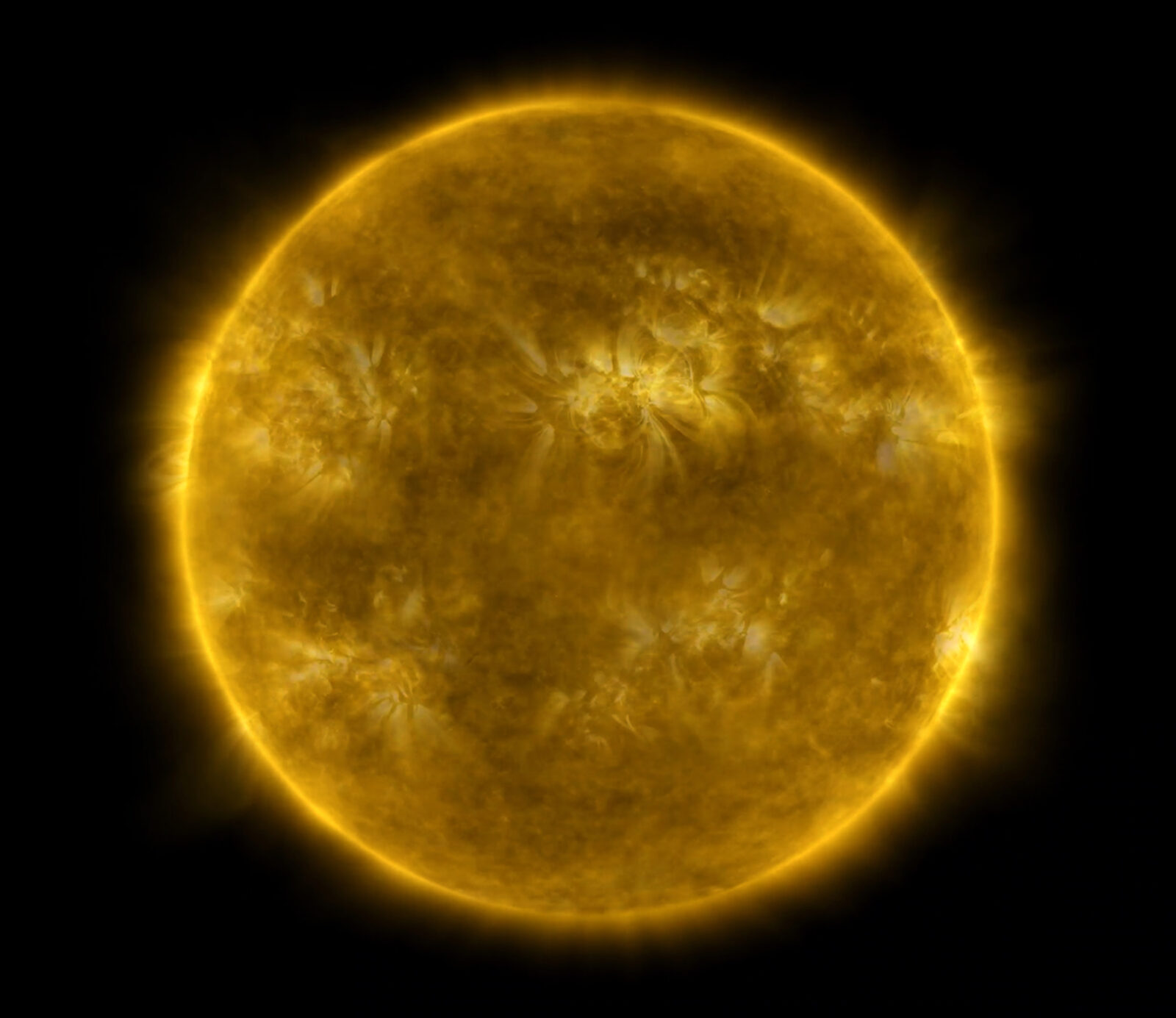
from the Series: M&A –- Metaphysics and Art21. October – 13.November 2022
The exhibition deals with the visualization and fragmentation of celestial bodies. The starting point is a cosmological view of our world as a unity or, indeed, as an entity. Quantum physics, the expansion of the universe and baryogenesis are taken as parameters and put in relation to human societies. Is exponential growth envisioned in nature? Are the resources of the celestial bodies infinite? What are the lessons of the universe, reflected in culture?
Compresión de Titan – Roominstallation / Marcos Calvari
Titan, Saturn’s largest moon, is so far the celestial body that most resembles our planet: rains and wind have designed mountains, plains, hills and valleys in an orange tone.
Besides the Earth, it is the only place in the known universe where rivers, lakes and seas have been found. However, these courses are not of water but of liquid methane, a highly inflammable hydrocarbon produced by the greenhouse effect, which comes from the interior of the satellite.
In other words, there are rivers, lakes and seas of fuel on Titan. And this has been produced by a prolonged greenhouse effect, century after century.
Climate change on our planet could develop, in the not so distant future, that the rivers, lakes and seas will be fuel? Would the perverse minds that seek to overflow with money be happy to have such a quantity of fossil fuels on a planet where they cannot live?
Imagine the banks of the Spree of liquid gas. Imagine the Atlantic of fuel.
Paraphrasing Borges, I think of the inordinate confidence we have before mirrors: We confirm that it gives us back exactly our image, just as it really is. But if in truth, Earth’s mirror is none other than Titan, a planet that looks apparently the same but where its waterways are inflammable?
An energy crisis afflicts the world, while the most similar planet bounces with fuel.
On Titan there is summer, winter, precipitation, evaporation, wind, cold, waves, boulders, disappearing rivers, and soft, wet sand.
The installation is located coordinated with the center of the total image at the same latitude and longitude as OKK is on Earth.
Costura #7. De la serie La Costura del mundo – (the sewing of the world) / Florencia Silva
The sewing of the world is a series of actions where the common denominator is to join or link certain geographical points with sewing thread.
Here, an element of a fragile nature has the function of tying places together. Its weakness disappears in the repetitive gesture of each stitch. Its invisibility diminishes when its simple presence marks a “here and there”. Its tension is tested when its support moves.
This poetic act proposes an emphasis on both the points to be connected and the route proposed for that purpose. I take up Vigo’s strategy of “signaling” or Greco’s “vivo-ditos”, understanding that meaning is generated with the simple selection and action that´s involving a certain geographic point. As for the route, far from looking for practicality and efficiency, it is proposed as an essential resource the displacement, which works as a means to understand and assimilate the existing links between the parts to be pointed out.
SCHEDULE:
21. October – Vernissage – 7pm
23. October – Artist talk – 7pm (OKK room)
28. October – Kolonie Wedding Evening
29. October- Performance / COSTURA #7
12. November – Finissage
Opening hours: Thursday until Sunday 4 – 8 pm
Curator: Pablo Hermann
Curatorial Assistant: Maria Hermann
OKK/raum 29 | Organ Kritischer KunstPrinzenallee 29, 13359, Berlin, Germany
instagram: @okkraum29
This Project is supported by Bundesverband Soziokultur and the federal Fonds Neustart Kultur.
